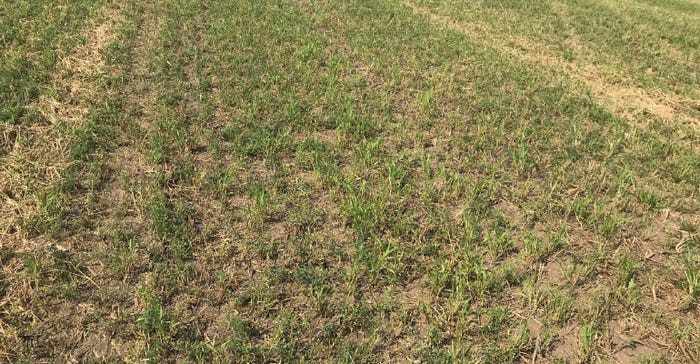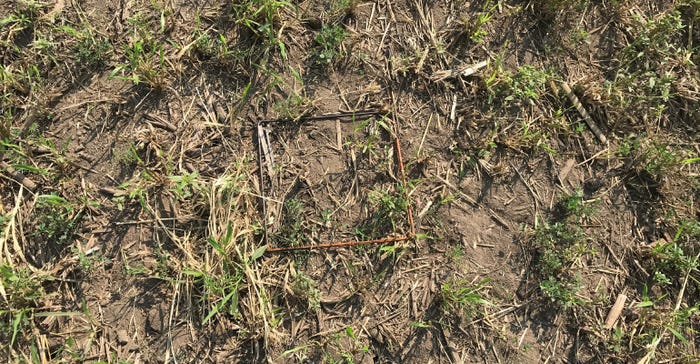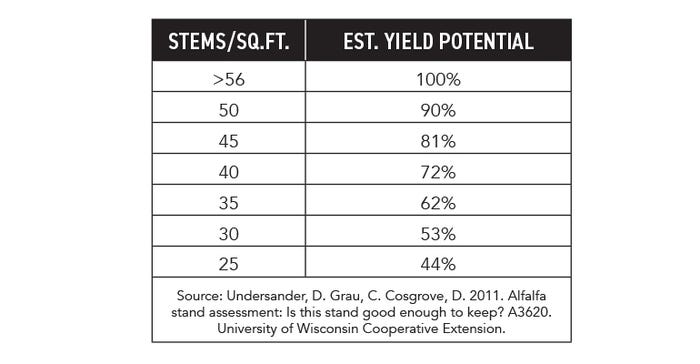March 1, 2021

Sponsored Content
Seed selection is just one part of achieving a successful alfalfa stand. No matter the quality of the seed, poor planting practices will never return a satisfying stand of alfalfa. Decisions made during establishment will factor into production over the life of the stand.
ALFALFA SEEDING FIELD PREPARATION
The ideal time for seeding alfalfa varies by location, with southern areas usually seeding alfalfa in late summer. In contrast, northern areas seed alfalfa in the spring during April or early May. When seeding alfalfa in the late summer, the goal is to allow six weeks of growth before freezing temperatures. This allows the plant to develop and form a crown enabling a seedling to survive the winter. Regardless of which time works best for your area to plant alfalfa, there are several key factors to establishing a good stand.
Field Selection: The selected field must have been rotated out of alfalfa for at least a year. Adequate field drainage is also critical for alfalfa success.
Herbicide Carryover: It is important to evaluate the herbicides that were used for weed control the year prior to seeding alfalfa. Alfalfa is a small-seeded broadleaf and susceptible to herbicide carryover.
Fertility and pH: Correcting soil pH and fertility, particularly immobile nutrients like phosphorus and potassium, is critical. This will allow the incorporation of lime and immobile nutrients into the top several inches of the soil. The ideal soil pH range for alfalfa is 6.5 to 7.0. If needed, raising the pH can best occur when the lime is worked into the top 6 in. of the soil. It is best to amend the pH a year or more before seeding.
Seedbed Preparation: When final preparations are being made to the soil for seeding, the seedbed should be firm and consistent. Alfalfa should be seeded at 18 to 22 lb./A. with a target of covering the seed with ¼ in. to ½ in. of soil.
EVALUATING ALFALFA STANDS
Once the alfalfa is planted, the first step is to ensure an adequate stand is established. Several weeks after planting, stand counts should be taken with the goal of having 40 to 50 plants/sq.ft. (1.7 – 2.2 million plants/A.). This represents approximately 50% to 70% of the planted seed emerging. During the first year after planting, it is common for the stand count to be reduced to about half of where it was initially, resulting in about 20 plants/sq.ft. However, stands as low as 12 plants/sq.ft. can still yield well. It is during this first year of alfalfa establishment when poor stands can be improved by adding more alfalfa through interseeding. After a year, the alfalfa will produce chemicals that prevent newly seeded alfalfa from growing, which is called autotoxicity.


Monitoring an alfalfa stand is critical as it ages, keeping in mind that older stands often look thin, but can still be
productive. However, it is important not to let the thinning and ultimately poor productivity be a surprise. Having a
plan to establish a new field of alfalfa to allow the timely termination of the old, less productive stand will help maximize profitability.
Often, alfalfa stands become too thin to be productive enough to meet the farm needs. This is where proactive alfalfa planning is critical. The chart on the right estimates yield potential based on stem count/sq.ft, where 50 stems/sq.ft. and greater should result in a yield potential of 90% or more.

Each year the stand will likely continue to thin out. When evaluating stands, it is important to dig up and split the crowns of random alfalfa plants to gauge plant health and better predict the longevity of the alfalfa crop. Preparing for alfalfa seeding should include a multi-year plan to help better manage the life cycle of an existing field of alfalfa.
For more resources, like the Beck’s Alfalfa Planting Guide, visit beckshybrids.com/Products/Alfalfa-and-Forages
Beck’s is the largest family-owned retail seed company in the United States that serves farmers in Arkansas, Illinois, Indiana, Iowa, Kansas, Kentucky, Michigan, Minnesota, Mississippi, Missouri, Ohio, South Dakota, Tennessee, and Wisconsin. According to a recent seed industry survey, Beck’s ranks as the third largest corn and soybean brand in the United States. At their core, all Beck’s employees are Farmers at Heart. It stands for something special. It has soul. It has truth. And it represents a community of farmers, employees, and dealers who strive each day to seek challenges, push boundaries and innovate. Beck’s has, and always will be, proud to serve a community of farmers who love what they do and who are proud to be… Farmers at Heart. For more agronomic new and information, visit Beck’s Agronomy Talk page or blog at BecksHybrids.com.
About the Author(s)
You May Also Like




